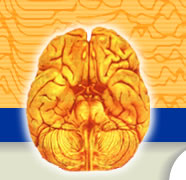Neuroimaging Laboratory
The BRI Neuroimaging Lab runs with over a dozen Silicon Graphic O2s. We carried out some preliminary analysis of meditation in collaboration with the University of Iowa and with Henry Ford Hospital in Detroit running a number of subjects using respiration as the state variable. We submitted a R21 to NCCAM but were not offered funding at that time. We welcome any lab to consider using our initial efforts to evaluate this widely used and extensively research program of Transcendental Meditation and the unique brainstate of transcendental consciousness.
Below is the application abstract which summarizes the project. A copy of the submitted R21 text is available as a PDF.
ABSTRACT: Despite a 47% increase in CAM usage during the past decade and a growing body of CAM biomedical research, there remain major gaps in CAM literature. One such gap, reflected in the NCCAM Five-Year Strategic Plan, is the need for basic neuroscience research to elucidate underlying mechanisms of CAM modalities, including meditation.
A recent meta-analysis of 597 studies reported that one CAM modality, the Transcendental Meditation program (TM), has the largest intervention effect compared to rest and other meditation/relaxation techniques. In addition, over 125 studies published in peer-reviewed journals document TM’s benefits for physiological and psychological health, including reduction of chronic stress, cardiovascular disease, substance abuse and smoking. Furthermore, TM is a simple procedure practiced by people of diverse ages, cultures, religions and socio-economic backgrounds. Since TM is extensively researched and has broad public usage, it is a logical candidate for a neuroscience mechanism study of a CAM modality.
An understanding of meditation in terms of brain mechanics is expected to facilitate evaluation and implementation of this CAM modality to a variety of chronic disorders. Neural models of meditation, primarily derived from the TM technique, are based on primarily EEG, ERP and autonomic recordings. These measures provide indirect guidance for model building. More direct examination of brain dynamics during meditation is needed to help create a more accurate and reliable model. Functional magnetic resonance imaging (fMRI) more directly images brain dynamics and is non-invasive. Preliminary research addressed design and feasibility issues for fMRI testing during TM. The results showed: (1) successful TM practice during the fMRI recording; and (2) the capability to successfully acquire and analyze data yielding significant changes in signal intensity in the brain during TM practice. The preliminary data have helped craft the design for the proposed study.
This R21 study—two experiments, seven hypotheses tested using 40 fMRI sessions—provides a direct examination of TM brain dynamics by imaging two principal meditation substates: (1) the de-excitation period, using fMRI cycling designs (Year 1), and (2) the periods of maximum physiological quiescence, using event- and state-related fMRI methodologies (Year 2). The data will be acquired and analyzed using standard data and statistical analysis methods including: (1) multiple-linear regression to construct statistical parameter maps, and (2) repeated measures ANOVA to test the experimental hypothesis of state-correlated brain activity.
Research results will provide an empirical basis for elucidating brain mechanisms of meditation, and will lead to several R01 proposals intended to: (1) verify the R21 findings of meditation mechanisms across different techniques, (2) focus on selected brain areas delineated in the R21 research; and (3) apply the neural model as a basis for TM practice as an intervention in clinical disorders, including ADHD and substance abuse.
|
